As we return from our summer hiatus, we are back with a rundown of some of the stories that came out during the break. On the planetary front, JWST has been taking amazing images and learning about exoplanets. On the astrophysics front, we’ve got stories on dark matter and Betelgeuse. And there were thirty orbital launches, including a whole lot of Starlinks… but not including Artemis.
Podcast
Show Notes
Perseverance finds salty rocks in Jezero
- NASA press release
- “Aqueously altered igneous rocks sampled on the floor of Jezero crater, Mars“, K.A. Farley et al., 2022 August 25, Science
- “An olivine cumulate outcrop on the floor of Jezero crater, Mars,” Y. Liu et al., 2022 August 25, Science
JWST captures gorgeous Jupiter images
- UC Berkeley press release
JWST’s first direct image of exoplanet released
- ESA press release
- NASA’s Webb Takes Its First-Ever Direct Image of Distant World (NASA)
JWST finds CO2 in exoplanet atmosphere
- ASU press release
- “Identification of carbon dioxide in an exoplanet atmosphere,” Eva-Maria Ahrer et al., to be published in Nature (preprint)
Dark matter found to be less clumpy than expected
- ICRR press release
- “First Identification of a CMB Lensing Signal Produced by 1.5 Million Galaxies at z∼4: Constraints on Matter Density Fluctuations at High Redshift,” Hironao Miyatake et al., 2022 August 1, Physical Review Letters
The Sun gets more active; expect aurora
- Trio of solar flares produce radio blackouts and dazzling auroras (Space.com)
- Astronaut spots bright aurora storm from the International Space Station (photos) (Space.com)
- Stream of solar wind brings stunning aurora to north American skies (Space.com)
- ESA press release
JWST captures galaxy’s gas structure in eerie new images
- NASA press release
Small rockets, others fly during hiatus
- An anomaly for two seconds led to SSLV mission’s underperformance: ISRO chief (The Hindu)
- KPLO mission page (SpaceX)
- China launches reusable experimental spacecraft (Xinhua)
Atlas V nearing retirement
- ULA press release
At least some humans got to leave Earth this summer, however briefly
- Blue Origin press release
SLS has not launched yet, to everyone’s shock
Transcript
Hello and welcome to season three of the Daily Space. When last we spoke, the JWST was returning pretty pictures with great fanfare that scientists needed time to understand, the SLS Artemis 1 rocket had rolled out to the launch pad prepping for launch, SpaceX had just tested booster 7 with some explosive outcomes, and many of us were getting baked dry by climate change
Six weeks later, everything has changed.
Just not quite how we expected.
As we’ll show you throughout the show, JWST is now quietly returning stunning images that scientists still need time to understand. SLS Artemis 1 is on the launch pad prepping to possibly return to the vehicle assembly building instead of launching. SpaceX has just retested booster 7 with great success, and many of us are experiencing flooding due to climate change.
I’m not sure this counts as progress, but it does count as change.
Today, we’re going to take a look at what JWST has seen, explore just what’s keeping Artemis 1 down, and look at a whole lot more science and rocketry.
My name is Dr. Pamela Gay, and I’m here to put science in your brain.
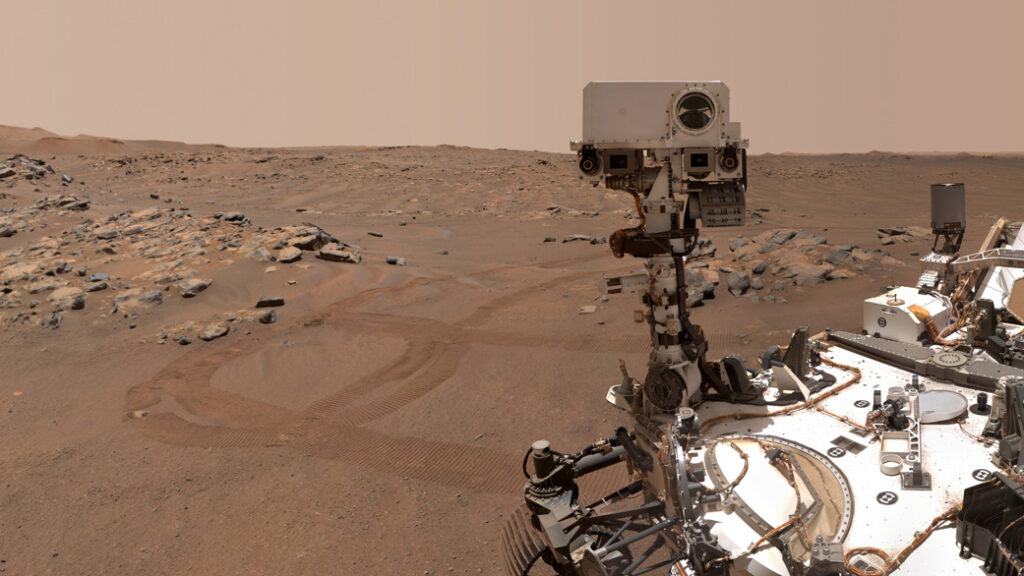
Right before we came back from our summer hiatus, two new papers in Science, led by Kenneth Farley and Yang Liu, brought us the first scientific results from samples taken by the Perseverance rover on Mars.
Perseverance landed in Jezero crater back in 2020. Ever since, this SUV-sized rover has been exploring and drilling samples from the floor of the crater; a crater that used to contain a large lake way back when Mars was still a wet planet.
Using onboard instrumentation, researchers studied the composition of some of these samples. Their research reveals a mix of lava rock – scientifically called igneous minerals – including the stunning mineral olivine, which requires water to form. Hiding in the rock’s voids and crevices were salts. This kind of mix can occur when lava rocks are soaked in brine – a salty, liquid water. They also found some of the igneous minerals had been transformed into a kind of mineral called carbonates. This is something that happens when carbon dioxide from the atmosphere dissolves in water. These are all processes we see here on Earth, and these martian samples are further evidence that Mars was once habitable for life as we understand it.
Perseverance rovers instruments did a mighty job getting us science, but we hope to one day do better using labs here on Earth. NASA is currently developing mission plans to bring some of Percy’s samples back to Earth as a part of the Mars Sample Return mission.
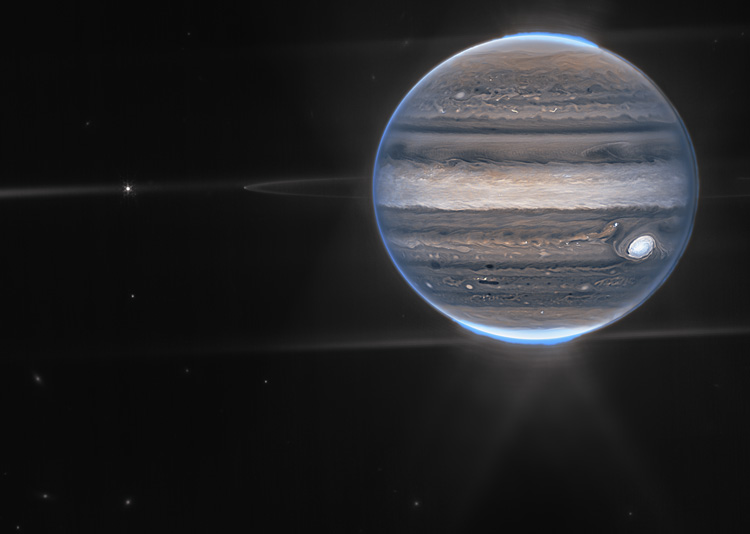
While Percy explored Mars, JWST looked at things a little… and a lot… farther away. These images included some gas giants, including Jupiter and an exoplanet.
The images of Jupiter are simply stunning. They reveal not only the Great Red Spot but auroral emissions at both poles, and in one mosaic, we can make out Jupiter’s faint ring system and two small moons.
Because JWST is an infrared telescope, the images had to be processed with false colors. Shades of red beyond what our eyes can see have been shifted into blues and grays that make Jupiter appear ghostly in all its gassy details.
From Jupiter, we jump to a distant gas giant. The European Space Agency (ESA) released a set of images that reveal a gas giant exoplanet in four different colors of infrared light.
The planet is HIP 65426 b, a world about six to eight times the mass of Jupiter. HIP 65426 b is about 100 times farther from its host star than we are from our Sun. This distance allows the planet to be well separated on the sky, but at that distance, it doesn’t have a lot of light to reflect: the gas giant is 10,000 times fainter than its star.
While the planet only resolves as a blob of light, this set of images demonstrates JWST can directly image planets. Researcher Aarynn Carter notes: Obtaining this image felt like digging for space treasure. I think what’s most exciting is that we’ve only just begun. There are many more images of exoplanets to come that will shape our overall understanding of their physics, chemistry, and formation. We may even discover previously unknown planets, too.
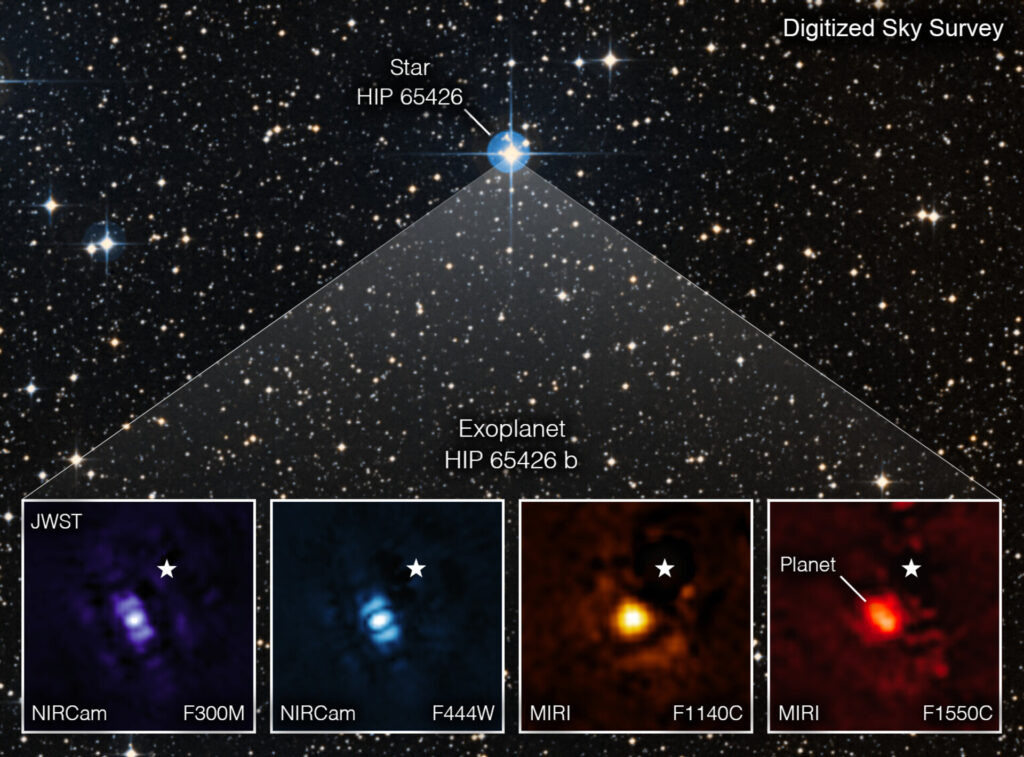
A paper on this image and its results is forthcoming.
JWST can do more than just take pretty – and sometimes blobby – images. Using its spectrograph, researchers can measure the composition of distant objects. In a first-of-its-kind measurement, JWST revealed carbon dioxide in the atmosphere of the exoplanet WASP-39 b.
The results will appear in a forthcoming paper in Nature led by Eva Maria Ahrer.
WASP-39 b is a gas giant that was discovered back in 2011. It orbits a star similar to our own Sun and appears to pass directly in front of that star during what is called a planetary transit. JWST observed the atmosphere of the exoplanet by looking at its star’s light passing through the atmosphere during a transit. Different atoms and molecules absorb and emit light in specific and known waves, and by looking for dark bands and bright stips in a spread-out rainbow of the star plus the planet’s light, researchers can tease out the composition.
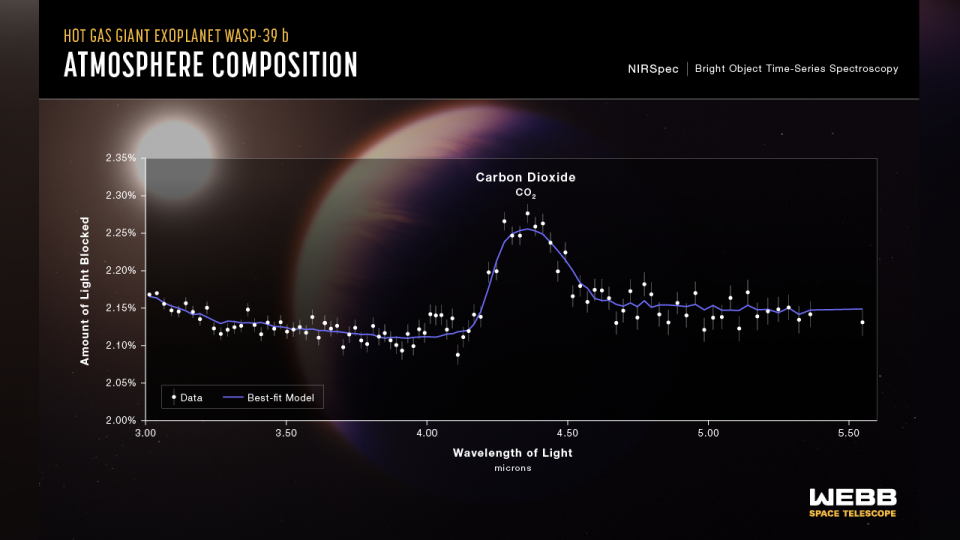
Co-author Michael Line has one of the best press release quotes ever, saying: I felt like a kid in a candy store when I first saw this spectrum. The fact that we can see unambiguous bumps and wiggles – point to them and say, ‘Hey, that’s carbon dioxide, hey, that’s water vapor, whoa, here’s this other bump and I don’t know what it is!’ — suggests enormous potential for discovery in the worlds beyond our solar system. It truly is a game changer.
As we learn more about each exoplanet’s atmosphere, we also learn more about how that planet originated and evolved. Line goes on to explain: Carbon dioxide molecules are sensitive tracers of the story of planet formation. By measuring this carbon dioxide feature, we can determine how much solid (carbon and oxygen-rich ices) versus how much gaseous (hydrogen and helium) material was used to form this gas giant planet.
This… this is the science we were waiting for from JWST, and this is only the beginning. The observations are a part of the Early Release Science program which is providing the planetary science community with “robust JWST data as soon as possible.”
And we look forward to more of these early results.
From nearby worlds, we now jump out to the farthest edges of the universe… and we do it without using the JWST… although that mission will play a role, again, later in this episode.

Researchers at Nagoya University and the University of Tokyo used the Subaru Telescope’s Hyper Suprime-Cam Survey to identify 1.5 million galaxies whose light has traveled for twelve billion years. Light travels at a set speed – about 300,000 km/s – and when we look at distant objects, we actually get to look back in time. Prior to this survey, galaxy research stopped with galaxies about eight billion years back; farther galaxies were just too faint to see.
The Subaru Telescope’s survey, however, got some help from galaxy clusters.
When a large mass is between us and a distant light source, that mass’s gravity can bend light just like a magnifying glass. This magnification allows us to see things we otherwise can’t.
And it isn’t just optical light that gets magnified. When we look carefully at the most distant light we can see – the cosmic microwave background radiation – we can see distorted places that are reshaped by the gravity of distant galaxies.
And… and… in this study, researchers used galaxy clusters to measure the light from galaxies from twelve billion years ago, and then they looked at the cosmic microwave background to see how those galaxies’ masses also distorted things.
Basically, thanks to a whole lot of gravity bending a whole lot of light, this team was able to measure how much light is coming from how much mass and then calculate how much dark matter is hanging out unseen.
This is amazing work. And it is amazing work that yields an unexpected result.
This team, led by Hironao Miyatake, found that the early universe wasn’t as clumped as expected.
We know the universe started out as a mostly smooth distribution of gas, and the tiniest fluctuations eventually turned into the galaxy clusters and voids we see in our modern universe. We have models that describe how we thought that would happen over time, and while the models mostly match, they don’t entirely match. If this research result stands up to further tests, this could help us fix those models.
This study, published in Physical Review Letters, only looked at one-third of the Subaru Hyper Suprime-Cam Survey. Future research will look at the rest of that survey, and we’ll bring it to you here when we learn more.
Okay, if that science was a lot to take in – and it was – well, the rest of this episode is pretty pictures and lots of rockets.
First, let’s go to the pretty pictures.
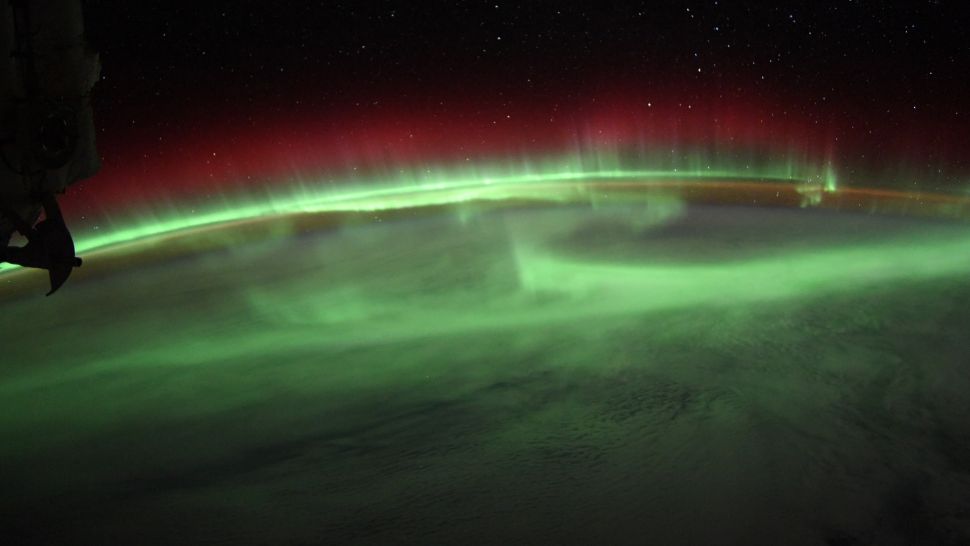
Our Sun has an eleven-year solar cycle, and over that time, it goes from being a bland ball of plasma to being a speckled mess of sunspots and coronal mass ejections.
This summer, our Sun started showing signs that the 2025 solar max could be a fun one. On August 27 and August 29, the Sun emitted a pair of flares that hit our atmosphere causing the sky to light up. These flares were followed by a coronal mass ejection on September 2 that created aurora as far south as New Hampshire.
While aurorae look good from Earth, they look amazing from space. In this image, we show the aurora as seen by astronauts from above. If you have the money to book a flight to space, go during solar max. For everyone else, you can also get amazing views from airplanes flying over the poles, so if you’re flying from L.A. to London, make sure to sit on the north-facing side of the plane.
If you want to know when aurora may appear, check out spaceweather.com and consider subscribing to their alerts.
Earth isn’t the only place with solar storms: ESA’s Solar Orbiter took a blast on August 30 as it flew toward Venus. Luckily, it’s designed to handle the blast. This is a reminder though — we don’t yet know how to protect humans on a journey to Mars from these kinds of events. This is one giant hurdle we’re going to need to solve before we populate the red planet with something other than robots.
Before we switch over to rockets, I have one promise I have to keep: images from JWST.
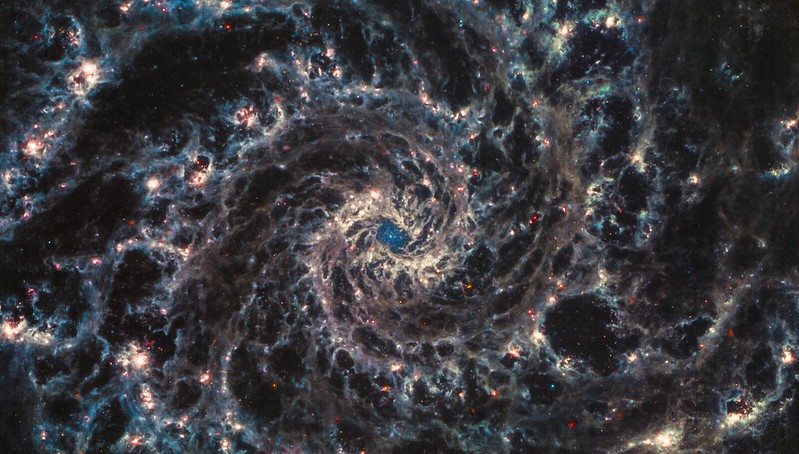
This summer, our newest massive telescope showed us familiar galaxies in totally unfamiliar ways. In one tweet, I saw the galaxy M74 [NGC 628] described as an Eldrich Horror, and I have to say I can’t disagree.
This bizarre spiral of darkness traces out the warm gas in an otherwise familiar galaxy.
When we look at M74 in normal light, we see stars and hot gas, but JWST is blind to all those hot objects. Instead, we see the lacy pattern formed by stellar winds and supernovae in cool gas.
JWST also looked at the southern spiral NGC 7496 and revealed what might be mistaken for the eye of Sauron.
But again, it’s just a galaxy with all the hot objects’ lights turned off.
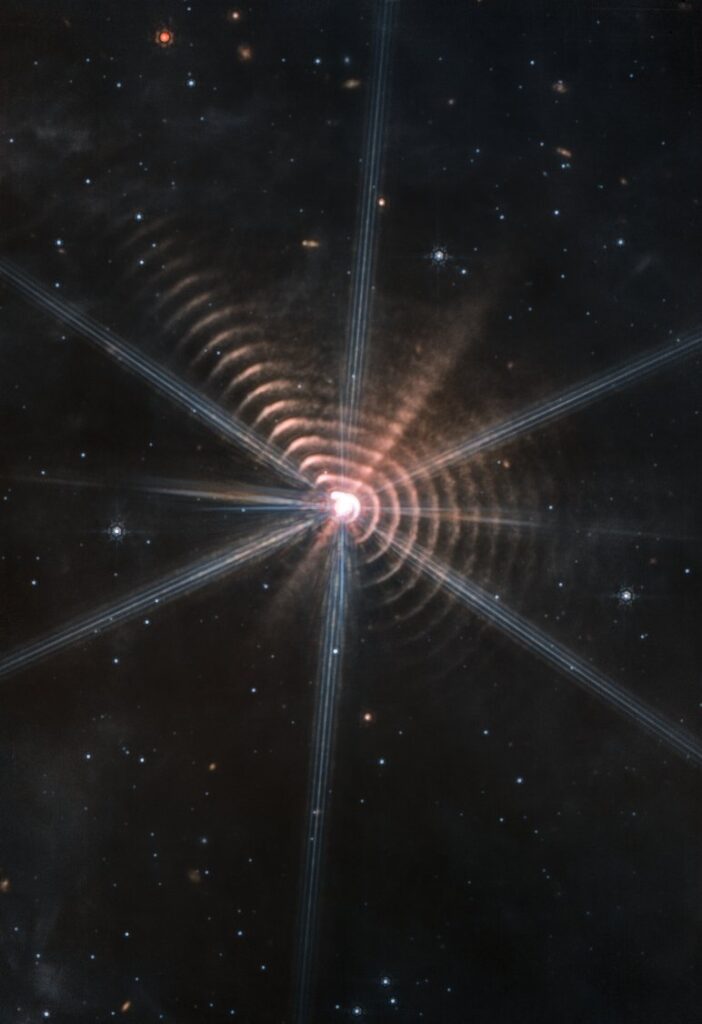
And before you start thinking JWST only looks at planets and galaxies, here is the star Wolf Rayet 140. This is a massive star in a binary system that is exhaling dust. It’s thought that the rings are formed by the gravity of the two stars herding the gas into these shells.
New science papers are still to come. I expect we’ll start seeing research papers around January and maybe even before. I, for one, can’t wait to read them and share the results with you.
Okay, enough with the pretty pictures. Now we turn to rockets with our rocket reporter, Erik Madaus!
During hiatus, a whole lot of rockets and cool payloads went up, and a few super cool rockets… well, they stayed on the ground.
Over the summer, there were thirty orbital launches carrying a total of 507 satellites to orbit. A whopping 89% of those satellites were just for the Starlink constellation.
Two brand new rockets also made their debut flights in July and August. On July 27, China’s new Zhongke-1A took to the sky out of the Jiuquan Satellite Launch Center.
On August 7, the Indian Space Research Organization unveiled the Small Satellite Launch Vehicle, also known as SSLV. Unfortunately, the first launch was a failure — the fourth stage only burned for a tenth of a second instead of the planned twenty seconds due to a bad sensor that prevented the fourth stage from firing the full duration.
August 4 was a day for setting records. On that day, a total of five rockets crossed the Karman line and entered space — this was the most ever in a 24-hour period. We don’t have time to go into depth about all of them, so here are the highlights.
To kick off the 24 hours of rocket launch extravaganza, Rocket Lab launched the classified NROL-199 mission from Mahia Peninsula in New Zealand.
Just under five and a half hours later, the second-to-last 400 series Atlas V took to the sky. Its payload was SBIRS GEO 6, a missile launch warning satellite for the U.S. military. The final 400 series Atlas V will launch later in 2022 carrying a weather satellite for NOAA.
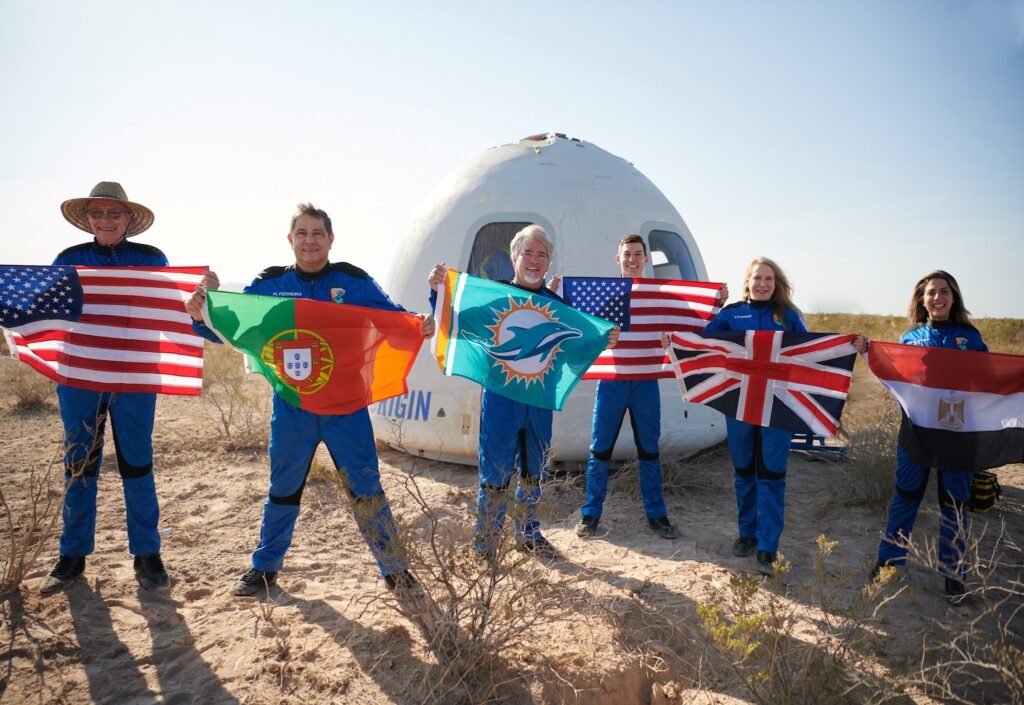
Next up was Blue Origin’s NS-22: the only human spaceflight mission that launched during our hiatus, carrying six passengers to space and back. This set of passengers included the first individuals from Egypt and Portugal to reach space, as well as Vanessa O’Brien, who has now completed the trifecta of being the first woman to reach the top of Mount Everest, the bottom of Challenger Deep, and traveling above the Karman line.
Then China launched their classified reusable orbital space plane on a Long March 2F, the same variant of the rocket that launches their crewed Shenzhou spacecraft. This space plane, or one similar to it, was launched to orbit for the first time last year. Nothing is known about what it does in orbit or when it will return to Earth.
And to wrap up August 4’s rocket extravaganza, a Falcon 9 launched the Korea Pathfinder Lunar Orbiter, which will arrive at the Moon in a few months. The orbiter was originally meant to launch on Korea’s own KSLV II but was moved to Falcon 9 after the KSLV II was delayed.
Last but not least there were the long-awaited first two launch attempts of NASA’s Space Launch System.
The rocket’s first official launch attempt was on August 29 after it had finally reached the pad after several Wet Dress Rehearsal attempts. During the countdown, the team ran into an anticipated issue because not everything could be tested during the rehearsals. The engine itself is fine — it turns out that there was a faulty sensor in the tank. In case you didn’t know, the inside of the rocket has not been inspected since it left the factory… three years ago.
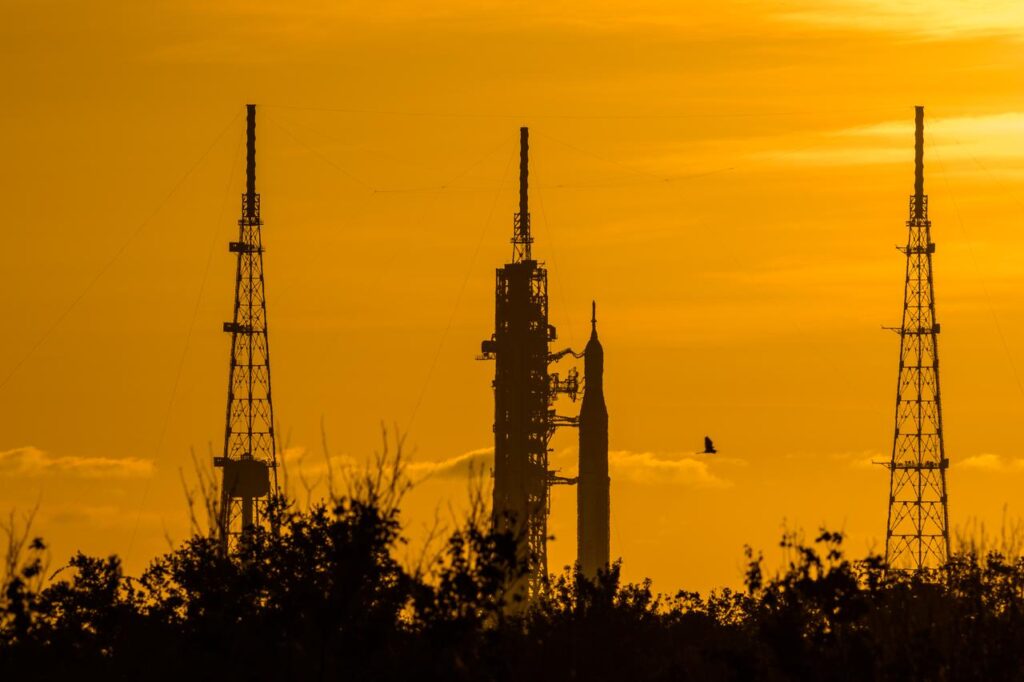
That didn’t stop the Internet from making loads of memes about it though.
The next launch attempt on September 3 didn’t go well either, with the teams calling a scrub hours before launch due to yet more propellant loading issues. The next possible launch date is September 19, but that could slip to October 17 or even later depending on how and where the issue is fixed — as well as the schedules of the other rockets waiting to launch, including the need to send astronauts to the ISS and national security satellites to orbit from Florida as well.
There are several things NASA needs to do to get the SLS rocket ready for another attempt.
Engineers need to replace a seal on the pipe that brings liquid hydrogen from the ground to the rocket. This seal is right at that interface, and its failure was the cause of the September 3 scrub.
There are two ways this can be done: replace the seal while the rocket is on the pad or push SLS back to the VAB and do it there. Doing the work on the pad prevents any potential stresses on the rocket and mobile launcher that might happen during pushback. The seal could also be tested since the cryo-temperature propellant loading system is right there. However, access to the rocket at the pad is limited, and this work can probably be done more easily in the VAB. But once SLS is in the VAB, the ability to test the seal is lost. This may mean another wet dress rehearsal before the next launch attempt.
That decision might be made for them. There’s another pesky issue: the batteries in the rocket’s flight termination system. They are only certified for a certain number of days, a condition which NASA has already waived once through September 6. Without an additional waiver, the SLS has to be rolled back to the VAB to replace the batteries.
It is important to note that this is a brand new rocket, and all of these systems are seeing their first issues. Teething issues are expected, and it’s better to not launch rather than launch and explode.
Space is hard, and watching these folks fight to keep hydrogen contained… well, on days like this I’m glad I’m an astronomer and not a rocket scientist.
In the next episode, we’ll be back with an episode that looks ahead at this fall’s best sky events. Tune in to learn when to catch planets and even the zodiacal light that Dr. Brian May made famous with his Ph.D.
For now, though, this has been the Daily Space.
You can find more information on all our stories, including images, at DailySpace.org. As always, we’re here thanks to the donations of people like you. If you like our content, please consider joining our Patreon at Patreon.com/CosmoQuestX.
Credits
Written by Pamela Gay, Annie Wilson, Beth Johnson, Erik Madaus, and Gordon Dewis
Hosted by Pamela Gay, Beth Johnson, and Erik Madaus
Audio and Video Editing by Ally Pelphrey
Content Editing by Beth Johnson
Intro and Outro music by Kevin MacLeod, https://incompetech.com/music/


 We record most shows live, on Twitch. Follow us today to get alerts when we go live.
We record most shows live, on Twitch. Follow us today to get alerts when we go live.